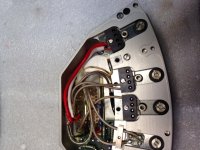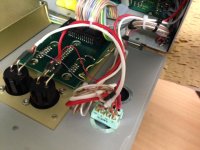Mike I double checked with Nick because I thought his units came with balanced and unbalanced inputs. Apparently there was some miscommunication. Here's his response.
That's the beauty of a differential input
It can be used either way , I provide both xlr and RCA inputs on the unit , if the signal from the transport is ground referenced, simply wire the output to an RCA connection and use it that way,
A tape head ( and mc cart) are differential devices in that they respond to changes in magnetic fields by generating a voltage on both ends of the winding that are equal in magnitude and opposite in polarity
When you choose to amplify this signal you can do it by referencing one of the poles to ground ( s.e) or you can chose to do it differentially (amplify only the difference between the two poles)
The advantages of the latter are that any common mode signal induced into the chain via electromagnetic interference is cancelled out, additionally by amplifying the difference voltage you get an additional 6db of gain over referencing one of the poles to ground, lastly any noise carried on the ground (rfi) is isolated from the amplification chain




